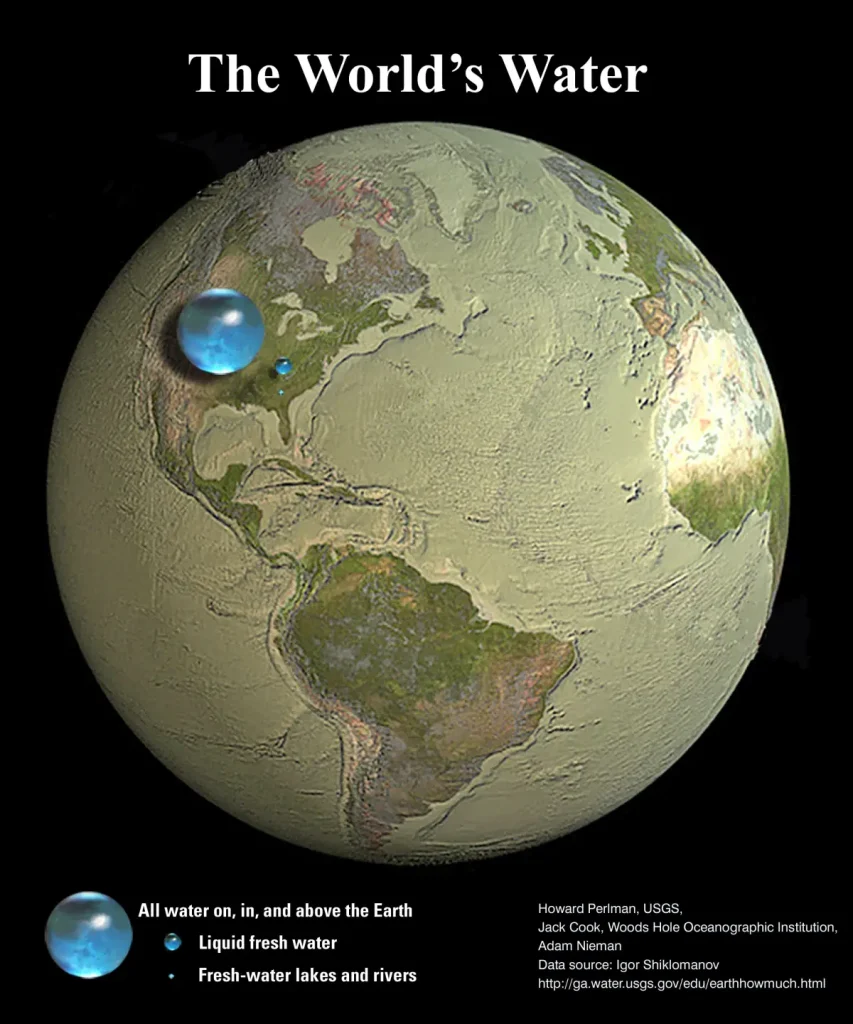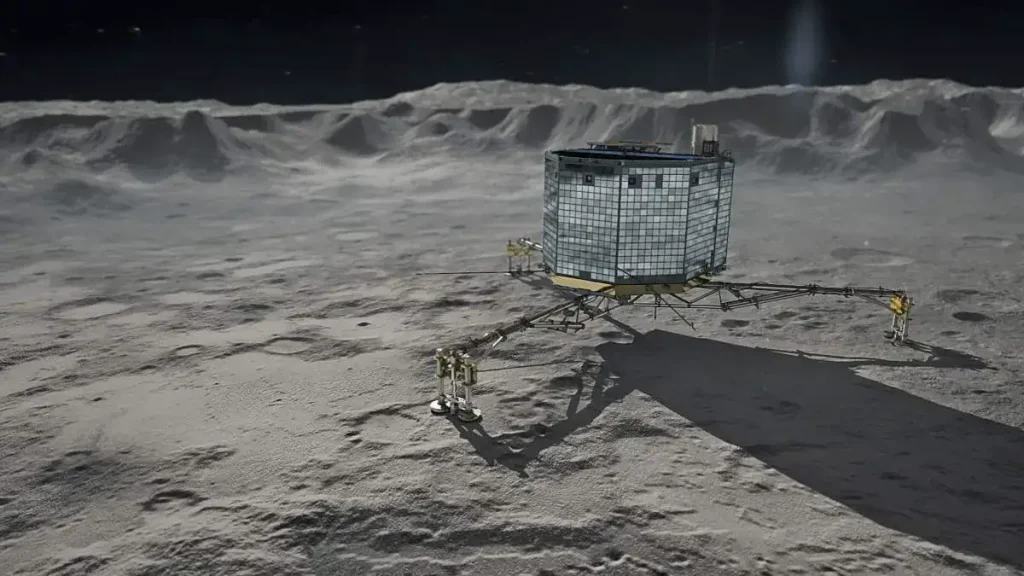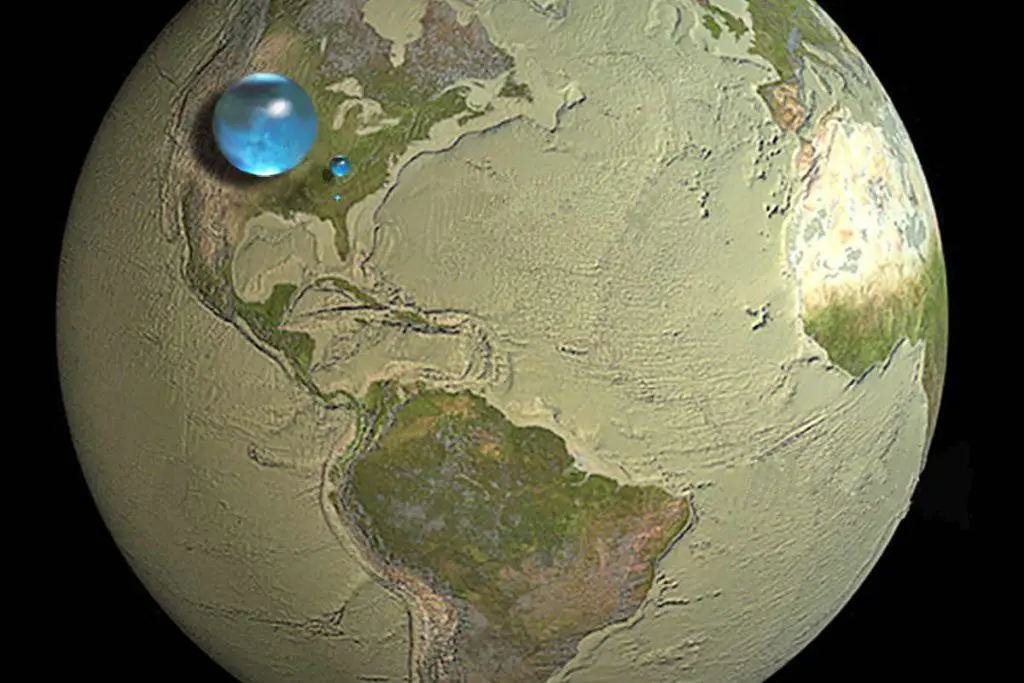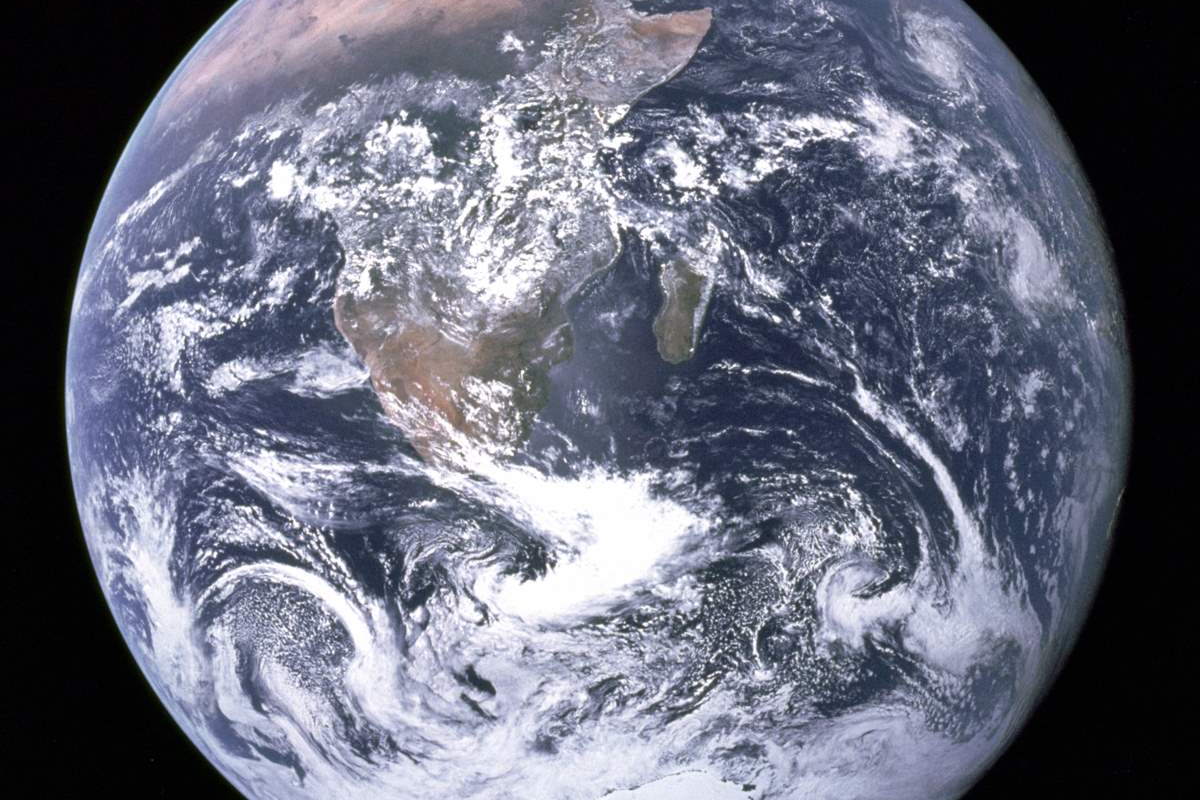Earth is a blue marble in space and the water gives our planet its blue color. About 71 percent of the Earth’s surface is covered with water. There is roughly 326 million cubic miles (1.332 billion cubic kilometers) of water on the Earth’s surface. Almost 97% of that water is salty (ocean water). But where did all that water come from?
There are two possible sources: space, and the Earth itself. Scientists used to think most of Earth’s water came from space, but recent studies may change this opinion.

Possible sources of the Earth’s water
The Oort Cloud
Previously, it’s been thought that the comets were from the Oort cloud. The Oort cloud, sometimes called the Öpik-Oort cloud, is a theoretical cloud of predominantly icy planetesimals believed to surround the Sun to as far as somewhere between 50,000 and 200,000 AU (0.8 and 3.2 light-years). AU stands for “astronomical unit” here, a unit of measurement equal to 149.6 million kilometers (93 million miles), the mean distance from the center of the earth to the center of the sun.
But there is a problem with that theory: the water on Earth contains two types of water: every 9,997 of 10,000 molecules are “normal water”, the H2O. But the remaining three are Heavy water (deuterium oxide), 2H2O, or D2O. Deuterium, also known as heavy hydrogen is a hydrogen isotope. The nucleus of deuterium, called a deuteron, contains one proton and one neutron, whereas the far more common hydrogen isotope, protium (or simply hydrogen), has no neutron in the nucleus.
To see if the comets are the main source of Earth’s water, in 1986, the Giotto robotic spacecraft of ESA (European Space Agency) flew by and studied Halley’s Comet (which is coming from the Oort cloud). The mission succeeded in approaching Halley’s nucleus at a distance of 596 kilometers (370 miles), and in doing so became the first spacecraft to make close-up observations of a comet. The analysis showed the comet formed 4.5 billion years ago from volatiles (mainly ice) that had condensed onto interstellar dust particles.
Halley’s comet was made of 80% water, but it turned out the comet had twice the amount of heavy water compared to the water on Earth.
The Kuiper Belt

There’s another source of the comets: the Kuiper Belt, a circumstellar disc in the Solar System beyond the planets, extending from the orbit of Neptune (at 30 AU) to approximately 50 AU from the Sun. In 2011, ESA’s Herschel Space Observatory revealed that Kuiper Belt comet 103P/Hartley 2 had a deuterium-to-hydrogen ratio “that matched terrestrial water perfectly”. So, it seemed the problem probably has been solved.
But it’s not: the European Space Agency’s Rosetta mission, launched on 2 March 2004, rendezvoused with 67P/Churyumov–Gerasimenko on 6 August 2014 and entered orbit on 10 September 2014. Rosetta‘s lander, Philae, touched down on its surface on 12 November 2014, becoming the first spacecraft to land on a comet nucleus.
Philae didn’t live long, but it sent back a large amount of invaluable data. And we learned that the amount of heavy water on 67P/Churyumov-Gerasimenko was even greater than the Halley comet: three times compared to the water on Earth. If the Kuiper Belt objects were the main source of the Earth’s water, even if most of them were like comet 103P/Hartley 2, the deuterium-to-hydrogen ratio on Earth would be significantly higher than it is today.
The Asteroids
There is a third possible explanation about where did the Earth’s water come from – and it’s the asteroids. Today’s asteroids have very little water, but probably a few billion years ago they had more. Approximately 4.1 to 3.8 billion years ago, a very large number of asteroids apparently collided with the early terrestrial planets in the inner Solar System, including Mercury, Venus, Earth, and Mars.
This event is known as the Late Heavy Bombardment (abbreviated LHB and also known as the lunar cataclysm). At that time, the asteroids could have much more water than today. They lost most of their water because of the sun and the heat. Future analysis of the ice-rich asteroids can tell us if they are the main source of Earth’s water.
67P/Churyumov-Gerasimenko again
In the future, 67P/Churyumov–Gerasimenko will come closer to the Sun, and with the heat, it will get warmer and become more active. The ESA is planning to fly Rosetta through a jet of gas that the comet to see if the deuterium-to-hydrogen ratio seen from the water near the comet’s surface is the same as that from near its core.

Related: Oceans of the Solar System
Other possible sources of the Earth’s water
A small amount of Earth’s water may have come from volcanism: water vapor in the atmosphere that originated in volcanic eruptions may have condensed to form rain, slowly filling the Earth’s oceanic basins.
Some terrestrial water may have had a biochemical origin, during the Great Oxygenation Event, via redox reactions and photosynthesis.
In the early 1930s, the Dutch-American microbiologist Cornelis Van Niel (November 4, 1897, Haarlem – March 10, 1985, Carmel, California) discovered that sulfide-dependent chemoautotrophic bacteria (purple sulfur bacteria) fix carbon and synthesize water as a byproduct of a photosynthetic pathway using hydrogen sulfide and carbon dioxide:
CO2 + 2H2S -> CH2O + H2O + 2S
Few modern organisms use this method of photosynthesis, making their water contribution negligible.
Recent Studies
From the cloud which the Earth formed
According to a recent study titled “Origin of Earth’s Water: Chondritic Inheritance Plus Nebular Ingassing and Storage of Hydrogen in the Core” published in the Journal of Geophysical Research in October 2018, some of the Earth’s water comes from the vast cloud in space from which our planet formed. According to the study, based on computer modeling, one out of every 100 water molecules on Earth came from the solar nebula.
From the early interactions between Earth’s atmosphere and mantle
The recent studies may change everything we assumed before. Studies over the past few years have found evidence of several oceans’ worth of water locked up in rock, as far down as 1000 kilometers (62 miles), questioning the assumption that water arrived from space after Earth’s formation.
A 2017 study, for example, based on isotopes from meteorites and Earth’s mantle, also found that water is unlikely to have arrived on icy comets after Earth formed, as has long been assumed.
Instead, all this research seems to suggest that much of the Earth’s water may have come from within – although no one yet knows exactly how much.
In a 2023 study that takes a fresh look at our planet’s formative years, researchers from Carnegie Science and UCLA have proposed an intriguing theory. They argue that the genesis of Earth’s water may be deeply intertwined with the fiery, turbulent conditions of the early solar system.
According to their hypothesis, planetary embryos – the nascent forms of planets – played a crucial role. These bodies, still in their infancy, were enveloped in hydrogen-rich atmospheres. At the same time, their surfaces were dominated by vast oceans of swirling, seething magma.
The team suggests a dynamic interplay between these elements. The dense, hydrogen-saturated atmospheres interacted with the molten surfaces, a process that may have led to the formation and retention of water on our planet. As such, the study presents a compelling picture, of where Earth’s quintessential life-sustaining liquid might owe its existence to the volatile yet fascinating interactions during these early cosmic times.

Related: How much water is on Earth?
To delve into the interaction between hydrogen-rich atmospheres and magma oceans on early planetary bodies, the research team turned to the world of numbers and equations. They constructed mathematical models, creating a virtual laboratory where they could observe the dynamic exchange of materials between these two major components. The models took into account a broad spectrum of variables – 25 distinct compounds and 18 types of reactions, thus encapsulating a comprehensive view of possible scenarios.
The virtual experiments carried out using these models yielded enlightening results. The dance of elements revealed that massive amounts of hydrogen were pulled from the atmosphere, finding a new home within the metallic core of these proto-planets. In tandem, the mantle – the layer of the planet between the crust and core – underwent oxidation, a process that changed its chemical composition. However, the most exciting revelation was the formation of significant volumes of water due to these interactions.
A crucial implication of the study is the potential answer to a long-standing question – could Earth’s water originate solely from the processes on a bone-dry planet? According to the researchers, the interactions between a hydrogen-rich atmosphere and a magma ocean could indeed birth substantial water amounts, irrespective of the initial aridity of the rocky material that coalesced to form the Earth. This means that while additional water sources may have contributed, they are not mandatory to explain the volume of water we observe on our planet today. This perspective significantly enriches our understanding of our planet’s evolution and potentially other rocky planets in the universe.
Sources
- Oort Cloud on Wikipedia
- Origin of water on Earth on Wikipedia
- Deuterium on Wikipedia
- Giotto (spacecraft) on Wikipedia
- Most of Earth’s Water Came from Asteroids, Not Comets on Space.com
- Kuiper belt on Wikipedia
- Rosetta (spacecraft) on Wikipedia
- 67P/Churyumov-Gerasimenko on Wikipedia
- Late Heavy Bombardment on Wikipedia
- “Planet Earth makes its own water from scratch deep in the mantle” on the New Scientist website
- “How did Earth get its water?” on EarthSky
- “Scientists may have learned how Earth got its water” on Earth.com
- Space Shuttle Endeavour’s Touchdown Meets Columbia’s Salute [An amazing photo from the past] - February 29, 2024
- Moon Landings: All-Time List [1966-2024] - February 23, 2024
- From Orbit to Ordinary: 10 Earthly Applications of Space Technology - January 23, 2024

